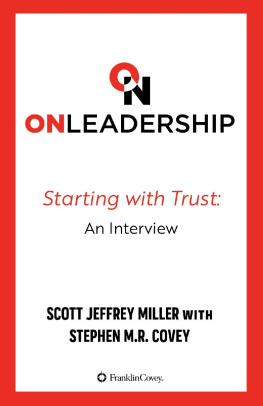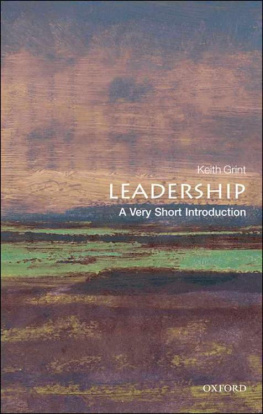We would like to acknowledge the support of the Alexander von Humboldt and Carl Friedrich von Siemens Foundations, as well as Lady Margaret Hall, Oxford. We have benefited from ongoing support from the Institute for Business in Society at the Darden School of Business, in particular Executive Director Joey Burton and the following researchers: Sergiy Dmytriyev, Megan Juelfs, Rebecca Little, Jenny Mead, Andrew Sell, Logan Spangler, and Salem Zelalem. We are grateful to Harry Lloyd for further research assistance.
Thanks also due to: Thom Little and Steve Lakis from the State Legislative Leaders Foundation; Professors Gregory Fairchild, Mary Margaret Frank, Jared Harris, Tim Rood, and Ben Wempe; Jennifer Hicks from the Darden Executive Programs; Jamie Dow and Christopher Megone from the Inter-Disciplinary Ethics Applied Centre, University of Leeds.
The development of this book would not have been possible without the support and encouragement of the Oxford University Press, especially Peter Momtchiloff and Adam Swallow. We are also grateful to Jenny King for seeing the project through to the end. An earlier draft was seen by three anonymous readers for the Press, who provided us with incisive comments. Their advice helped transform the book into a much larger project than was initially conceived.
Finally, David Newkirk originally suggested that we work together. He has been a constant source of insight over the years.
Studies of leadership have proliferated in recent years, drawing on a wide variety of disciplines, among them history, management studies, political science, economics, and psychology. This is predominantly an academic phenomenon, but it exists alongside more informal, self-help books, as well as autobiographies written by former CEOs and others. In the course of all this, a vast number of definitions and theories of leadership have been proposed, such as transformational, servant, responsible, ethical, and thought leadership.
In this book, we adopt a very different approach, by going back to one of the greatest thought leaders of all time, the Greek philosopher Plato, and using his insights to throw light on contemporary theory and practice. The book combines an account of his thought with applications to modern case studies and leadership approaches. Plato wrote extensively on political philosophy, where he puts a great deal of focus on leadership: what kind of leaders there should be, how they are to be trained, and what kind should be avoided. Our view is that what he said about political leadership carries over well to other spheres, notably business.
His views on leadership are interesting in part because of the time in which he lived. Athens in the fifth century bce , when he was born, was a place of extraordinary innovationcultural, intellectual, and political. But it was also a roller-coaster of a time, the highest achievements of the human mind matched by periods of extreme violence and chaos. All this gave him the opportunity to witness leadership at its best and its worst. It should also be said that he was not just a theorist, but an institutional leader in his own right: he created a vehicle for the dissemination of his ideas, called the Academy, a centre for teaching and research that was in many ways the inspiration for the modern university.
Plato left behind around thirty books on a wide range of topics, ethics and politics being two of the most prominent. Although some of his writing is quite technical, it has a friendlier side, capable of tapping into the intuitions of his readers and appealing to their imagination. This is certainly the case when he writes about leadership. Across a number of his works, he uses the following models to understand the phenomenon:
the shepherd
the doctor
the navigator
the artist
the teacher
the weaver
the sower.
Even before you read any of his works, you can see the appeal of these models. Each one points to certain features of leadership, which we intuitively recognize to be important. To compare a leader to a shepherd is to stress the notion of care; as someone who tends the flock, protecting it from dangers, the leader is the servant of their followers. The doctor is also at the service of his or her patients, focusing first and foremost on their well-being. This model also makes us think of various social or institutional ills that the leader might have to remedy. The navigator is someone who steers the passengers and crew through choppy waters. There is the idea of danger here, especially unpredictable dangers. Like the doctor model, there is also the idea of a specialized skill practised by the leader. This raises the question of exactly what expertise the leader will have, how they acquire it, and from whom. So too with the leader as teacher: now the idea is that you lead by informing and educating people. The relation between leader and follower is more intellectual than in the case of the shepherd, perhaps also the other two models as well: after all, we dont think of navigators instructing their passengers, or even doctors their patients (though in this case we might).
The model of the artist emphasizes the importance of vision: just as a painter or a sculptor might look to a model and organize materials in its image, the leader is guided by a vision, which may be moral, social, or technological. The model of the weaver is all about cohesion: a weaver selects and then unites several different strands of wool into a single garment; likewise a leader needs to recruit the right people and, despite their very diverse talents and temperaments, bring them together into a unified team. Finally, the sower is someone who takes a more hands-off approach to leadership. Their aim is to generate ideas and initiatives for others to take up and then develop. The leader plays an important part in nurturing these ideas, but they are also happy for others to take the lead.












